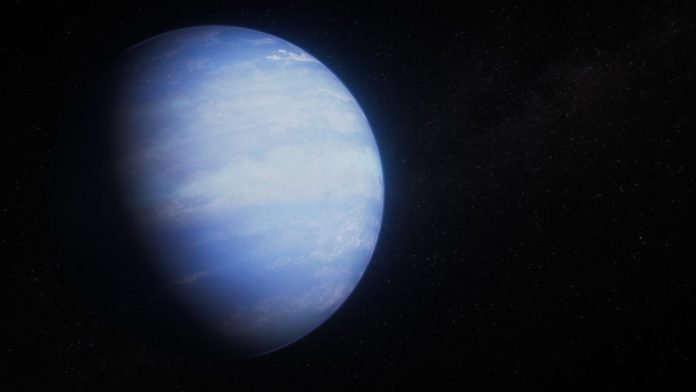
Why is the gas-giant exoplanet WASP-107 b so puffy?
Thanks to data from NASA’s James Webb Space Telescope and previous observations from the Hubble Space Telescope, scientists now have an answer.
WASP-107 b, often called a “warm Neptune,” is over three-quarters the size of Jupiter but less than one-tenth its mass, making it one of the least dense planets known.
While puffy planets are not rare, most are hotter and more massive, making them easier to explain. The puzzle was why WASP-107 b is so inflated despite being cooler and less massive.
Researchers from Arizona State University (ASU) and Johns Hopkins University (JHU) found that the planet’s atmosphere has surprisingly little methane (CH4).
This indicates that the interior of WASP-107 b must be much hotter and its core significantly more massive than previously thought.
The high temperature likely comes from tidal heating caused by the planet’s slightly non-circular orbit.
As the distance between the planet and its star changes, the gravitational pull also changes, stretching and heating the planet.
Using Webb’s NIRCam and MIRI instruments and Hubble’s WFC3, researchers observed the light absorbed by WASP-107 b’s atmosphere. They built a spectrum that showed various gases like water vapor, carbon dioxide, carbon monoxide, sulfur dioxide, and ammonia. The precision of this data allowed scientists to measure the amounts of these gases.
Both teams found very little methane in the planet’s atmosphere—about one-thousandth of the expected amount.
This suggests that hot gas from deep inside the planet mixes with the cooler layers higher up. Methane breaks down at high temperatures, so the lack of methane indicates a hotter interior than expected.
This new understanding of WASP-107 b’s internal heat helped scientists estimate the planet’s core size. They found the core to be at least twice as massive as originally thought. This explains how the planet formed: it likely has a significant rocky core surrounded by a large gas envelope, similar to Neptune but with more heat.
The findings show that planets like WASP-107 b did not need to form in unusual ways with tiny cores and huge gas envelopes. Instead, they could have formed more like Neptune, with a lot of rock and some gas, then heated up and expanded.
In summary, WASP-107 b’s puffiness is due to a combination of its significant internal heat and massive core, solving a long-standing mystery in exoplanet science.
These results, made possible by the Webb Telescope’s extraordinary sensitivity, may help explain the characteristics of many other low-density exoplanets.



